
_1725_detail.jpg)



On November 1, 1945, change comes to Springfield, E. Paul du Pont hands over the keys to Indian Motorcycles.
In 1930, Indian merged with DuPont Motors. DuPont Motors founder E. Paul du Pont decided to cease production of DuPont automobiles and concentrate all of the company's resources on Indian. du Pont's paint industry connections resulted in no fewer than 24 color options being offered in 1934. Models of that era began using Indian's famous head-dress logo on the gas tank.
In 1940, Indian sold nearly as many motorcycles as its major rival, Harley-Davidson. During this time, the company also manufactured an array of other products such as aircraft engines, bicycles, boat motors and air conditioners. Anything to keep the boat afloat. When du Pont first took over Indian was losing hundreds of thousands of dollars annually, but by 1939 the company was earning unprecedented profits, in part due to the military demands of the Allies at the start of World War II and the rush of domestic buyers anticipating the scaling back of civilian production during a time of war. While the turnaround was good for Indian, it also made the company more attractive for a possible buyout.
By the mid-1940s, du Pont’s health was failing and he felt he could no longer manage the day-to-day operations of Indian. He and the board of directors began entertaining offers to buy Indian over cocktails at a local Springfield gin-joint. In 1945, a group headed by Ralph Rogers purchased a controlling interest of the company. On November 1, 1945, du Pont formally turned the operations of Indian over to Rogers.
Under Rogers' control, Indian discontinued most of it's profitable and best selling bikes (good financial move there, Ralphy-boy) and began to manufacture lightweight motorcycles such as the 149 Arrow and the Super Scout 249, both introduced in 1949, and in 1950 introduced the 250 Warrior. Production of traditional Indians was extremely limited in 1949, and no 1949 Chiefs are known to exist. Sadly, Indian halted all production in 1953.
du Pont will be remembered for keeping Indian open during the darkest days of the Depression by focusing on its core business of building motorcycles. He backed the engineering department’s continued development of improved models and kept the company’s racing program vibrant under the new Class C rules. He was also an enthusiastic backer of the AMA and was involved in activities of the association. He died at the family estate in Delaware on September 26, 1950.
E. Paul du Pont was inducted in the AMA Hall of Fame n 2004.




The Triumph X75 Hurricane prototype was sent to England on October 31, 1969 and sat collecting dust until mid-June, 1970, when it was shipped directly to Cycle World magazine in the US.
The 'factory custom’ is an oxymoron that Harley-Davidson should have a trademark on. They've almost made it an art form for Crissakes. And nearly all other manufacturers have followed suit.
But, it was BSA that pioneered this now-successful formula, with Craig Vetter’s strikingly styled X75 Hurricane in 1973. Not only was the X75 the world’s first 'factory custom', it also influenced later mainstream motorcycle design.
The Hurricane grew out of the lukewarm response to the original BSA Rocket Three in the US. It was considered the ugly girl in the back row so, in 1969, BSA in the US approached a young designer, Craig Vetter, to produce a prototype custom Rocket Three.
Vetter’s own philosophy was to contrast the age-old traditions of the British motorcycle industry with the American underground youth culture.
He set to work on a stock 750cc BSA Rocket Three, creating a single curvaceous molded gas tank, seat and side panels. The 750cc three-cylinder engine was left basically stock, Vetter modified the cylinder head by enlarging the fin area. This was done purely for aesthetic reasons, as were the black-painted cylinder barrels.
The distinctive triple mufflers sweeping to the right were derived from those of the Team BSA flat tracker. These may have worked well on left-turns but they severely limited right-hand-side ground clearance. Oops.
Going for a leaner look, Vetter installed separate instruments and a traditional chromed headlamp. The gaitered forks also made way for what was considered cleaner Ceriani-style ones, these were later lengthened 50mm by Pete Coleman at BSA in the UK for a slight 'chopper' look. Painting the prototype in ‘Camaro Hugger Red’, Vetter had this up and running by September, 1969.
BSA executives approved a limited-production run of the Vetter Rocket during 1971 to test the market which, at the time, was a huge surprise considering the company was walking on eggshells financially. However, piss-poor management saw the entire Triumph and BSA line-up miss the 1971 US season and it wasn’t until late 1971 that the pre-production Vetter Rocket appeared.
When production ended in January 1973, only 1172 were built.
Little known fact - BSA in the UK initially knew nothing of the Hurricane project. It was conceived by Don Brown, director of the BSA Group’s eastern facility, BSA INC., in Nutley, New Jersey. The project was financed from office petty cash and kept secret from BSA Group management in England until it was completed. Brown resigned from BSA in 1970.
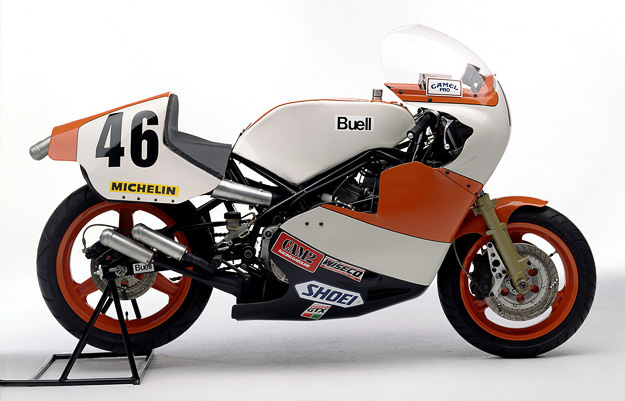




The last Buell motorcycle runs off the assembly line. The 136,923rd such beast.
The first Buell was the RW750, a 750cc, two-stroke, "square-four," rotary-valve machine designed specifically to compete in the AMA Formula One motorcycle road racing championship. But, shortly after the first two RW750 bikes were finished the Formula One Series was canceled. Erik Buell then turned his focus towards racing-inspired, street machines using Harley-Davidson's Sportster motors.
In 1993, Harley-Davidson purchased 49% of Buell, investing $500,000 and taking Erik Buell's house as security. Erik Buell took the deal, against strong advice from his attorney. Harley-Davidson CEO Jeffrey Bleustein had bought it as a skunkworks development. Five years later Harley buys a majority stake and takes control of Buell Motorcycle Company and the company became a subsidiary (who didn't see that coming).
Then to no one's surprise H-D forced Buell to follow a rigid product planning and distribution process, with the philosophy that Buell was the starter brand, the kids bike if you will. Customers would eventually get older and trade up to a Harley. By 2008, Harley's credit arm, Harley-Davidson Financial Services, was struggling, and the lower resale value of Buell motorcycles meant that new bike sales were significantly affected. When Harley CEO Keith Wandell was hired, he immediately questioned why Harley even owned Buell. Wandell, who had never even been on a Harley before being hired, was heard talking about "Erik's racing hobby", and questioned "why anyone would even want to ride a Sportbike" (what an ass). He organized a team to analyze "the adrenaline market", and concluded that Sportbikes would encounter high competition and low profits, while cruisers had high return.
The 'Wandell hammer' fell on October 15, 2009 as Harley Davidson Inc. announced the end of production of Buell Motorcycles to focus more on the Harley Davidson brand. Selling Buell wasn't even considered, as Harley didn't want their dealerships to sell an outside brand, and they didn't feel Buell had much value without the dealer network.

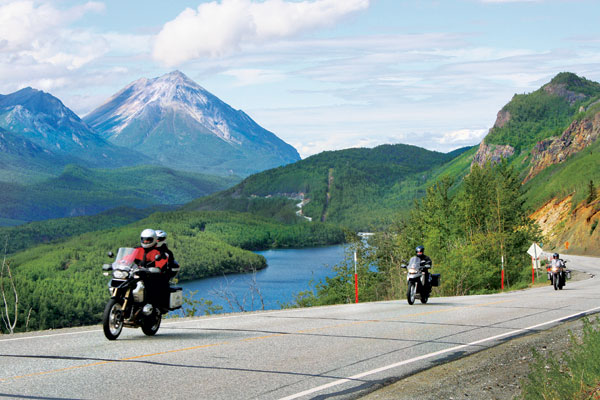
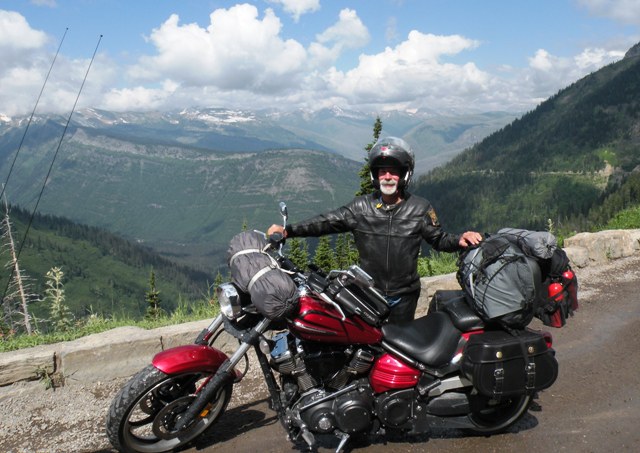
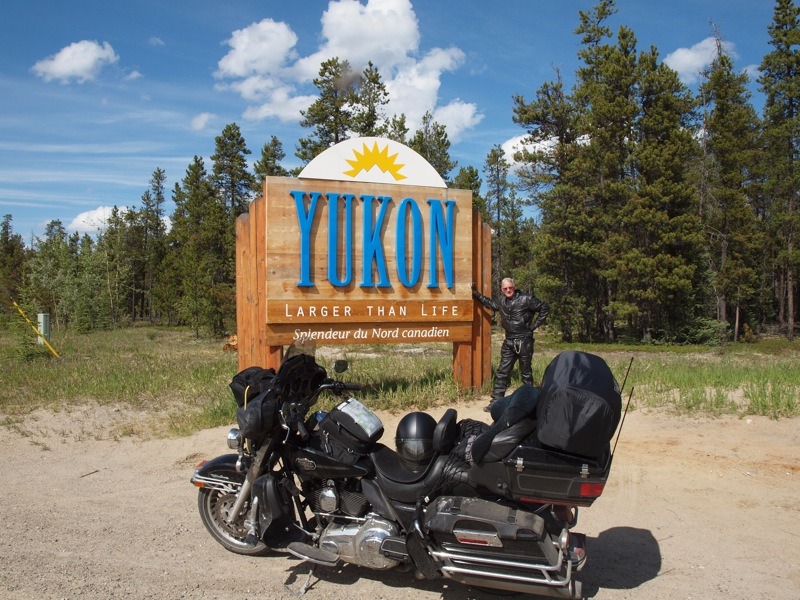
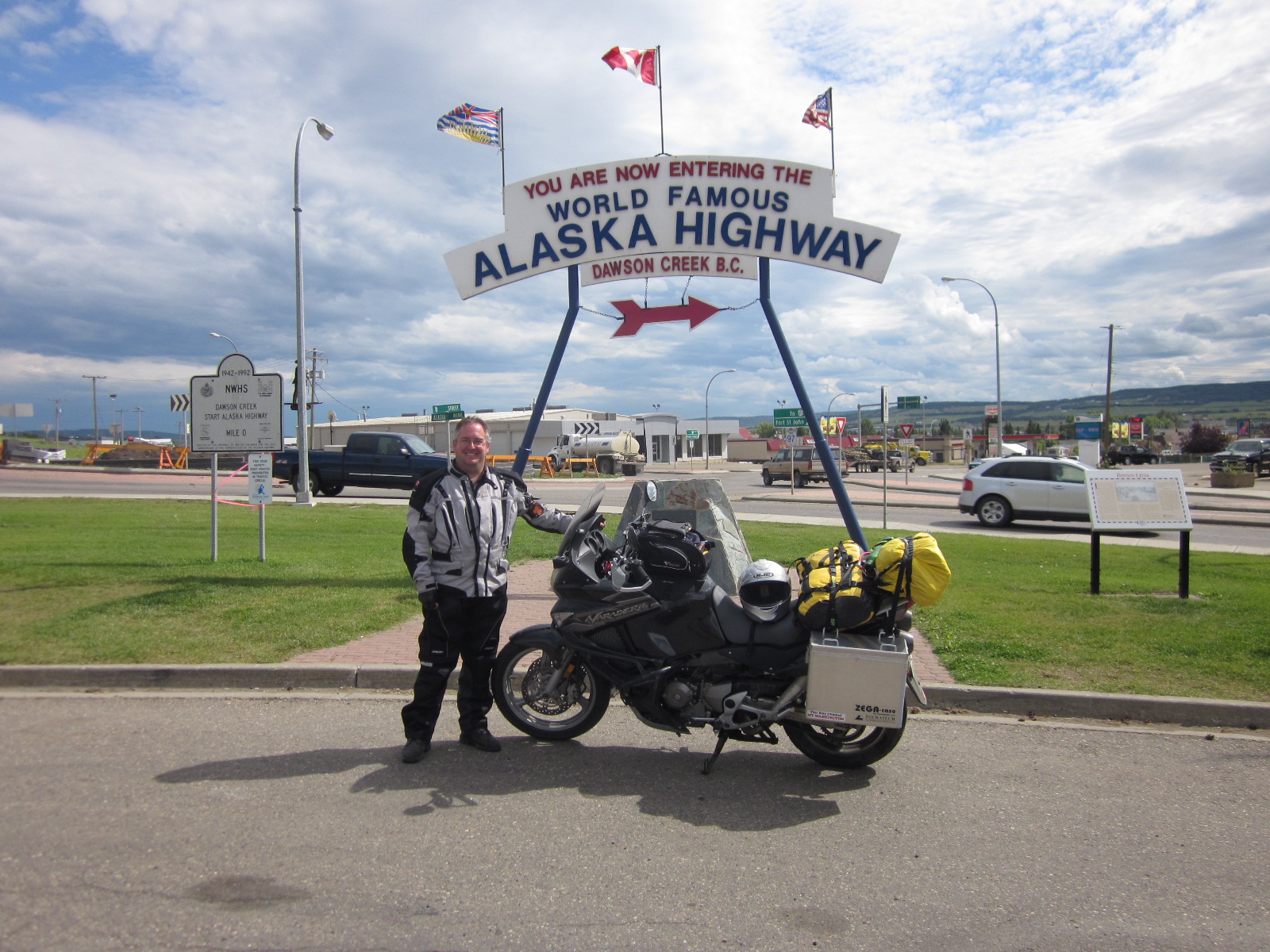

The Alaska Highway officially opens to military traffic.
Until the attack on Pearl Harbor on December 7, 1941, Alaska was just a neglected U.S. territory, "that cold land up north". The Klondike gold rush of the 1880s and ’90s was nothing more than a distant memory, and oil had yet to be discovered. A vast wilderness pretty much left to the bears and the hardy few who lived on the frigid fringe. But, the Japanese attack (coupled with their military incursions into the Aleutian Islands) changed things in an instant. Alaska suddenly became a potential Japanese invasion route to Canada and the Lower 48, so both governments agreed that the road would now be built.
Military necessity dictated the route. The Alaska Highway — like the Burma Road for moving Allied supplies from northern Burma to China — would take little account of mountains, wilderness, water or elevation. So much for scenic, meandering roadways.
The Army Corps of Engineers — augmented by thousands of civilian contractors — began construction through the northern wilderness. Grueling, backbreaking work with bitter sub-zero temps in the winter and murderous mosquito's in the warmer months. In the end, the 1,500-mile highway, stretching from Dawson Creek in British Columbia to Fairbanks, Alaska, was completed in an astounding eight months. In many places, it was a “highway” in name only with stretches of unpaved road, murderous switchbacks and no guard rails or shoulders.
Fast forward 70+ years - Alaskan motorcycle tours abound. Ride some of the most beautiful motorcycle roads not only in the U.S. but, the world.
"Ride the famous Alaska Highway! This 2,650-mile journey, on all paved roads that starts in Seattle, Washington and travels through western Canada to Anchorage, Alaska. Enjoy a 11-day, fully supported, trip of a lifetime with postcard scenery around every turn. Fantastic wildlife viewing opportunities, historic gold towns and open road.
Whidbey Island, Deception Pass, Northern Cascades, Okanogan Valley, British Columbia, Yukon Territory, Kluane National Park,Wrangell-St. Elias National Park and more."
Or...
"This is a no-frill direct route to Alaska. My rationale for this is that everyone has his or her own idea of spectacular roads and past experience shows me that individual bikers map their favorite route home. For example, your return route home can take in the Icefield Parkway (Jasper, Lake Louise, Banff) or Glacier National Park or the Badlands in South Dakota or River Road in Illinois, etc."
or...
"Cruising the open road on a motorcycle offers a totally different perspective of Alaska. The 13 State Scenic Byways and one All America Road transport adventuresome riders into the wild, where the views get better with every bend in the road.
Fields of lupine and fireweed line the road and paint the surrounding hillsides and valleys. Berries plump and juicy tempt riders to abandon the road for the tasty, natural delight. Glaciers, mountains and wildlife in every direction – touring Alaska on a motorcycle is as invigorating as it is scenic."
Spring is coming fast, let's plan a trip...



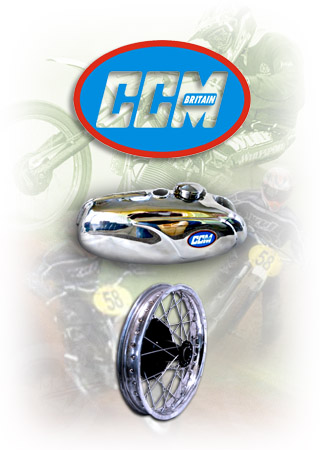
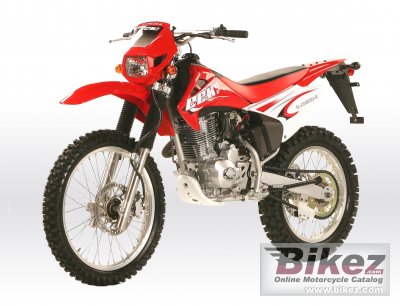

CCM launches two new bikes at the NEC show; a new version of its Supermoto and a pre-production version of the FT35 flat tracker.
The R35 takes the look of the 644cc R30, but fits it with a smaller water-cooled 400cc to make a great looking Suzuki DR-Z400SM rival.
To tempt riders even more, the R35 comes standard with WP suspension, Brembo brakes and an Acerbis mini fairing. But wait there's more, CCM offers a whole host of options to drool over including leg-wetting carbon bodywork, carbon rims or full magnesium wheels.
They also showed pre-production versions of its new FT35 flat tracker, one with 19" wheels and one with 17" wheels.
Those of you who are non-English, non-motocross fans are asking, "what the hell is a CCM?"
CCM (Clews Competition Machines) is a manufacturer of predominately off-road motorcycles based in Bolton, (near Manchester) England. CCM was created after the collapse of BSA's Competition Department in 1971.
When the Competition Department went out of business, British champion Trials and Scrambles rider, Alan Clews, saw his opportunity and bought all the works parts that were available. Clews began building motocross bikes in his garage. Not having works engines just made Clews develop his own extensive improvements to the standard BSA B50 500cc engine. His reputation began to grow as a builder of four-stroke motocross bikes that were capable of competing with the dominant two-strokes. By the mid-1970's CCM racing was already achieving respectable results in the 500cc Motocross World Championships with John Banks in the saddle.
Initially powered by BSA engines, the firm used Rotax engines during the 1980s and 1990s when production reached a peak of 3,500 annually. Between 1983 and 1985, over 4,000 CCM motorcycles were licensed to export bikes to North America under the Can-Am badge.

Joseph Stalin orders the first Russian-built Ural M-72 motorcycles sent into battle the oncoming German forces.
The Ural story begins in 1939, during the USSR’s pre-World War II planning. Despite the Molotov—Ribbentrop Pact (aka the Nazi-Soviet Pact), the Soviet Union knew it would soon be going to war against Hitler and his army known as Germany. ... A nervous Stalin ordered the military to prepare all areas of operation, including the ground forces that would defend Russia against the invading Germans. Having seen the effects of the Blitzkrieg against the Polish Army, he knew that mobilization was of paramount importance to his country.
A meeting was held at the USSR Defense Ministry to discuss what motorcycle would be most suitable for the Red Army to ride. After it's unsuccessful conflict with Finland the Red Army needed to modernize the motorcycles, as they were far from satisfactory, to put it nicely. Their technology was outdated and the manufacturing quality-control appeared to be non-existent.
The official version of the Ural story reads that, after a long discussion and debate, the BMW R71 motorcycle was decided to most closely match the Red Army’s requirements for a combat motorcycle. One of these original BMWs survives and is on display at the factory museum. By the way, Harley-Davidson also copied the BMW and delivered about 1,000 Harley-Davidson XA (Experimental Army) flat-twin shaft drive motorcycles to the US Army during World War II.
The BMW factory supplied the construction drawings and casting moulds as a result of the Molotov—Ribbentrop Pact, and these transfers of technology had taken place in support of their Soviet “friends” in a variety of technological and industrial fields. Soviet engineers toured German aircraft factories and brought back complete cannons as samples. In 1941, BMW began series production of R75, and did not resume production of R71. Supplying the Soviets with the obsolete R71 model may have seemed a good idea at the time.
This as nothing to do with the Ural but, the OPEL Kadett was given to the Soviets just prior to the war; however, it commenced series production only toward the end of the war as the Moskvitch 400. I once dated a girl that had a navy-blue Opel Cadet in NY.
A factory in Moscow was soon producing hundreds of Russian M-72 sidecar motorcycles. The Nazi Blitzkrieg was so fast and effective that Soviet strategists worried that the Moscow factory was within easy range of German Luftwaffe and it was only a mater of time. It was decided to move the motorcycle plant further east, out of bombing range, into the middle of the resource rich Ural Mountain region. The chosen site was the small trading town of Irbit, located on the edge of the vast Siberian steppes in the Ural Mountains.
In their quest for a location, the only half-way decent building that Stalin found as a feasible manufacturing plant in town was a brewery. It was soon drank dry and then converted into research and development headquarters, where long hours were spent preparing for the construction of a massive new production complex for the M-72.
On October 25, 1942, the first M-72s were sent into battle. Over the course of World War II, 9,799 M-72 motorcycles were delivered to the front for reconnaissance detachments and mobile troops.
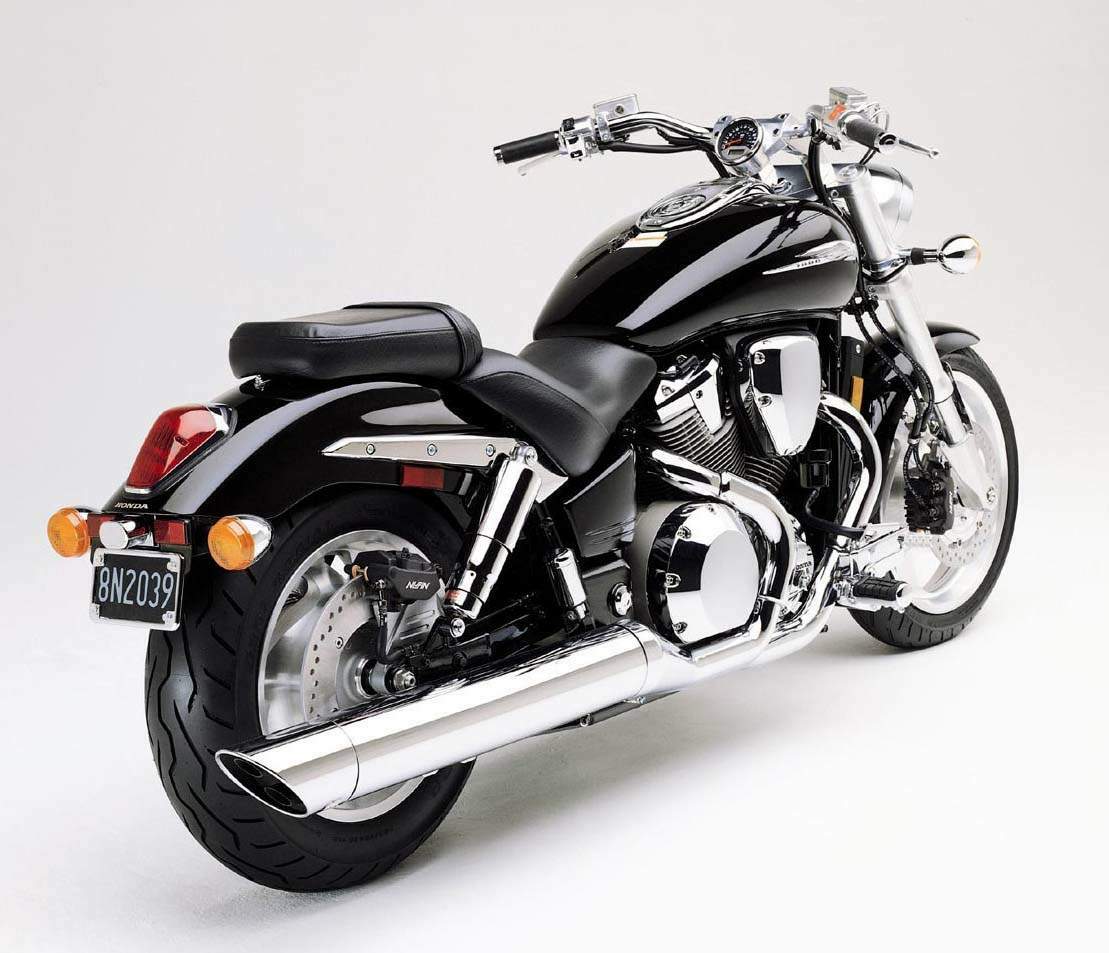
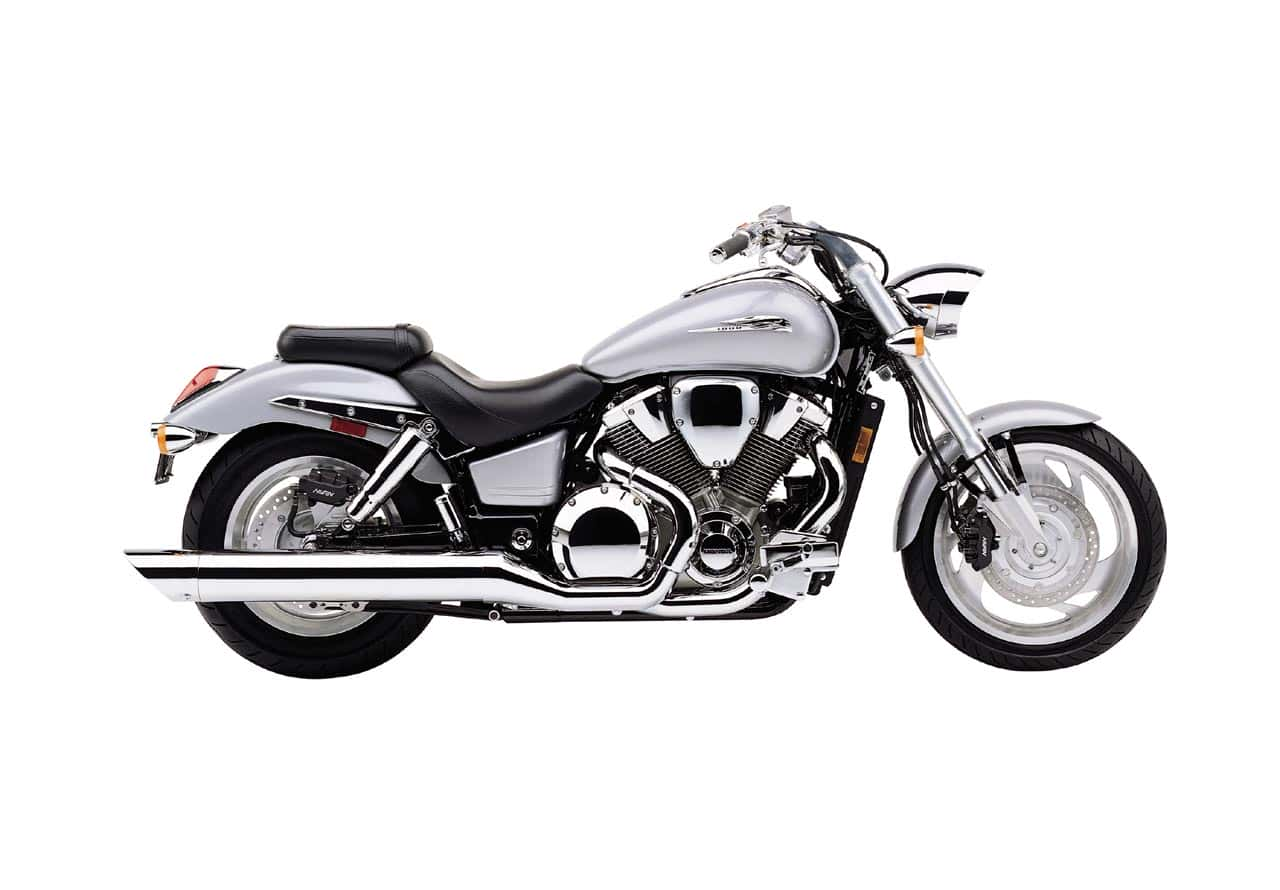
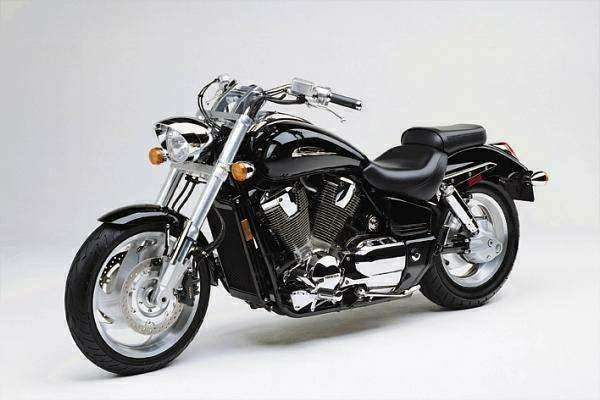

Honda finally announces the release of the VTX1800.
The following are excerpts from some of the excited parties...
Tokyo, October 22, 2001 - 'Honda Motor Co., Ltd. announces the release of the VTX, a powerfully styled large-displacement custom motorcycle equipped with a newly designed, water-cooled, 4-stroke 1800cc V2 engine that resonates power. The new model will go on sale October 23rd, 2001 through Honda's dealer network across Japan. The VTX, to be produced at Honda of America Manufacturing (HAM), Honda's U.S. production center, will be our American flagship model for our custom bikes. The engine will be the world's largest-displacement V2 available in a production motorcycle.' - Honda Worldwide
'Inspired by the Zodia concept shown at the 1995 Tokyo Motor Show, and after several years of marketplace chatter, and more than five years of closed-door development at Honda, the cruiser world has its enormous new entry. A street rod-styled bike, more bruiser than cruiser, driven by a massive 1795cc 52-degree, liquid-cooled and injection-fed V-twin - a motor that dwarfs Yamaha's 1600cc push-rod design, previously the hot-ticket for those inclined toward the big at heart. With impressive horsepower (we got 88.9 at 5250 rpm) and enough torque to pull trees -- 100.3 foot-pounds at 3000 rpm.
Oh, yeah, it's fast, too. On paper or pavement, Honda's VTX is much faster than any stock V-twin cruiser on your dealer's floor. With its 12.3 seconds at 105.5 mph quarter-mile time.' - Cycle Cruiser
'It's just a shame that I can't get Honda's superb F6C Valkyrie, out of my mind. A bike that proves to all - and Honda - that you don't need a vee-twin engine, let alone the biggest in production, to do the whole cruiser thing justice.' - First Ride (UK)
I'll leave this alone. No one needs my opinion on any of these bikes. Trust me.


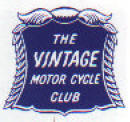


Motorcycle collectors from around the globe converge on the Staffordshire County Showgrounds for Bonham's "Important Collectors' Motorcycles" auction featuring a 1930 981cc SS80 Brough Superior once belonging to Charles Edmund 'Titch' Allen.
Titch Allen was the godfather of the classic motorcycle movement. As a cub reporter he rode his 172cc Francis Barnett to the 1931 press conference that announced the opening of the Donington Park race circuit. Slipping away early, he rode around the unmade paths and woodlands tracks of the proposed circuit and staked his claim to being the first to lap these hallowed grounds.
Born in May 1915 in rural Nottinghamshire, Allen left school at 16 and, with a 'gift for the written word', his ambitious and forceful mother secured him a spot as a trainee reporter at the Nottingham Guardian. His experiences as a bike-riding, roving reporter during those years led indirectly to his becoming deeply involved with the resurrection of the Loughborough Motor Cycle Club.
With the onset of WWII, as did many other young British motorcyclists, Titch responded to the appeals for Dispatch Riders and signed up to the Motor Cyclist's Army Register. He served as a DR, concluding the war as a sergeant and with the BEM.
Allen's obsession with motorcycles never left him in these tempestuous times and he claimed that the acquisition of a 1930 Scott in 1942 was the catalyst for the formation of a Vintage Motor Cycle Club*. The great stimulus for this group was a series of articles on the adventures of tracking down and acquiring old bikes written by Captain Jim Hall in 'The Motor Cycle'. The idea was Jim's but it was the work of Titch that got the club off the ground with the historic inaugural meeting in the Hog's Back Pub in Surrey on April 28th 1946. Titch envisaged a club where historic motorcycles would be used in competition and also as everyday transport.
Allen's achievements were recognized in 2004 with an OBE. He spurned the presentation at Buckingham Palace, explaining: "I didn't want my mates to have to pay the congestion charge to go down there; in olden days they used to hang you for highway robbery." Instead, Lord Lieutenant of Leicestershire, Lady Gretton, made the presentation in Donington Park racetrack's Grand Prix Collection hall.
About the auction, the winning bidder would hear the gavel slam at $111,233 (68,700 GBP).
*The UK-based Vintage Motor Cycle Club now has nearly 20,000 members.





The Motor Maids are officially recognized as the world's first women's motorcycle club when they're granted Charter #509 by the AMA (American Motorcyclist Association).
Linda Dugeau's boyfriend hoarded pennies during the summer of 1930 so he could purchase a $15 motorcycle. "The minute I saw it I wanted to ride," said Dugeau.
"Girl riders", as the motorcycle magazines called them, were scarce in those days. As motorcycling became an obsession for Dugeau, she and her friend Dot Robinson sought to unite female motorcyclists in a club modeled after Amelia Earhart's sorority for women pilots called 'The 99ers'.
Dugeau, Robinson and 39 other women met for the first time in 1940. They settled on the name 'Motor Maids of America', and established two rules: A Motor Maid must own her own motorcycle, and she must at all times conduct herself like a lady. Indeed, its original colors were pink before, in 1944, changing to royal blue and silver gray at which the same time they adopted their shield logo. White gloves were also part of the uniform.
Dot Robinson would be named the first president (a position she would hold for the next 25 years) and would become one of the most influential women in American motorcycling.
A few things have changed. You can't get a bike for $15 anymore; the large touring models favored by Motor Maids cost anywhere from $10,000 to $20,000. The white gloves and ties that once distinguished club members are now donned only for parades. The organization's name has been updated to 'Motor Maids Inc.', but the Motor Maids are still out to prove that "women who ride motorcycles can be above reproach." Their four-page constitution and bylaws, revised in 1985, stipulate that members must be of good character and "at no time shall a member of the Motor Maids appear on her motorcycle in shorts or abbreviated costume."
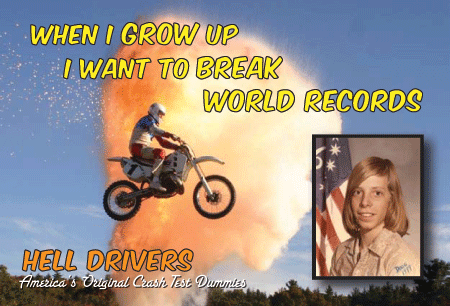


Doug "Danger" Senecal breaks Robbie Knievel's 17 semi-truck record jump by one
truck in Las Vegas, Nevada.
Doug Danger first began making a name for himself in 1979
when he successfully jumped 10 cars in Palmer, Massachusetts. After 10 years of jumping assorted vehicles and obstacles in various venues up and down the East Coast, Danger finally makes the big league when he breaks Evel Knievel's record for the longest car jump , by clearing 20 cars in
Toronto, Canada in 1989.
Two years later, Doug would break the longest
ramp-to-ramp jump by an American, by clearing 38 cars at a total distance of 251
feet at the New Hampshire International Speedway in Loudon, New Hampshire. The jump lands him in the Guinness Book of World Records for the farthest jump ever completed. The fame is coming, now for a little rent money...
... just prior to a 1992 Robby Knieviel vs Doug Danger jump-off with a purse of over *$750K Doug misses an 11 car jump at Hudson Speedway in Hudson, New Hampshire, and suffers 17 broken bones including a fractured skull, ribs, femur, tibia and fibula. Doug remained in a coma for more than a month. The right side of his brain was found to be damaged and it would be over 3 years before he completely regains his memory. (*Eddie Kidd would step in and beat Robbie Knievel in the jump-off.)
On March 18, 2000, Doug Danger jumped an L-1011 Jumbo Jet wing tip-to- wing tip.
The jump was filmed for the "I Dare You" television show. The jump was 160'
across. The takeoff ramp was 4 feet wide and 20 feet high. The fuselage of the
plane was 27 feet off the ground. Doug had to reach a height of 30 feet in the
air.
Doug "Danger" Senecal, one of the greatest motorcycle daredevil you've probably never heard of.







C'mon, Ponch, let up...
Since the beginning of September the CHP (California Highway Patrol) has been erecting roadblocks every Sunday along a two-mile stretch of Mulholland about 200 yards west of the Rock Store. And although the authorities say the tactic has eliminated motorcycle racing, the Rock Store's proprietors say it is strangling their long-established business.
"I'm down about 85%," said Veronica, who with her husband has run the Rock Store for 28 years and is usually known simply as "Vern."
Hare Kokkinos, a Northridge resident taking a break from his latest weekend motorcycle ride, stood outside the Rock Store and described how Sunday afternoons used to be at one of the best-known biker pit stops not just in L.A., but in the world.
"This place was packed with metal; motorcycles were everywhere," said Kokkinos, nodding at a long parking lot off Mulholland Highway that fronts the store about two miles south of Agoura Hills.
"It was wall-to-wall bikers."
The Rock Store, a small cafe and grocery that draws a wildly eclectic mix of motorcycle enthusiasts , patch-holding club members and upscale "yuppie bikers," including Hollywood figures such as comic Jay Leno and actor Arnold Schwarzenegger. Far fewer motorcyclists come in now, say the store's owners, Ed and Veronica Savko, who blame a determined--and controversial--California Highway Patrol effort to stop motorcycle racing along the highway's scenic but deadly curves.
"They're trying to force us out of business," Ed insisted. "You wonder if this is a police state or something."
"The Highway Patrol is not out for a good purpose," snapped a middle-aged motorcyclist from Santa Monica who identified himself only as "Joe".
"They totaled three patrol cars out here chasing motorcyclists," he said with a laugh. "And I guess that made the CHP angry."

_1725_detail.jpg)


_1725_detail.jpg)













































